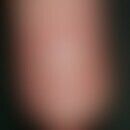DefinitionThis section has been translated automatically.
ClassificationThis section has been translated automatically.
Zinc deficiency can be divided into 4 categories:
- TypeI: insufficient intake, typically due to malnutrition or low zinc content in breast milk.
- Type II: increased zinc losses, which can be caused by gastrointestinal or urinary tract disorders such as chronic diarrhea.
- Type III: malabsorption, which may be genetic, as in acrodermatitis enteropathica, or non-genetic, due to diseases such as ulcerative colitis, or excessive intake of substances such as phytic acid, copper, or iron, which inhibit zinc absorption.
- Type IV: increased requirement often observed during periods of growth during pregnancy and lactation
You might also be interested in
EtiopathogenesisThis section has been translated automatically.
ManifestationThis section has been translated automatically.
The symptoms of genetic acrodermatitis enteropathica manifest shortly after weaning as the increased bioavailability of zinc through low molecular weight binding ligands in breast milk delays the onset of clinical symptoms. Infants who are not breastfed typically develop symptoms between 4-10 weeks of age.
Acquired zinc deficiency can occur at any age, although premature infants are particularly at risk due to low zinc reserves and increased zinc requirements.
LocalizationThis section has been translated automatically.
ClinicThis section has been translated automatically.
A distinction must be made between:
- Acute zinc deficiency dermatitis: episodic papulovesicular, sharply defined eczema. Perioral and perianal erosions, scrotal eczema. Flat blisters in the flexural folds of the fingers and palmae. Delayed wound healing.
- Chronic zinc deficiency dermatitis: Eczematous or psoriasiform skin changes, possibly generalized exsiccation eczema, acneiform folliculitis, diffuse alopecia, nail dystrophy, Beau-Reil's transverse furrows of the nails. Other disorders: growth retardation, susceptibility to infections, gastrointestinal disorders, photophobia, mental disorders. See also Acrodermatitis enteropathica.
Clinical example of zinc malge disease:
- Hereditary enzyme defect: Acrodermatitis enteropathica.
- Zinc loss in diarrhea, fistula secretion (e.g. ulcerative colitis).
- Malabsorption (e.g. Crohn's disease; celiac disease, Wilson's disease, pancreatitis)
- Burns
- Malnutrition (e.g. alcoholism, vegetarian diet)
- Increased consumption/excretion (e.g. growth, pregnancy, breastfeeding, atopic eczema, diabetes mellitus, liver cirrhosis, infections, diuretics)
LaboratoryThis section has been translated automatically.
During treatment, it is necessary to check serum or plasma zinc levels and the activity of zinc-dependent enzymes every 3-6 months.
DiagnosisThis section has been translated automatically.
Decreased serum zinc levels and alkaline phosphatase.
If a genetic zinc deficiency syndrome is suspected, whole exome sequencing is recommended, e.g. to identify variants in the SCL39A4 gene (acrodermatitis enteropathica).
Differential diagnosisThis section has been translated automatically.
TherapyThis section has been translated automatically.
Alimentary intake:
- Dietary sources of zinc include 33% from meat and meat products, 25% from milk, dairy products and eggs, 20% from cereal products and 20% from other sources.
Remember! A high calcium content and a low-fat diet impair zinc utilization.
Drug substitution:
- Mostly oral, in severe cases parenteral administration of soluble zinc compounds such as zinc sulphate, zinc acetate, zinc lactate under control of the serum zinc level. Substitution e.g. with Unizink (3 mg/kgKG /day). Also protein substitution (zinc is transported in the serum bound to albumin). Check serum protein: Desired plasma protein increase (g/l) times plasma volume (l/kg bw) times 2 = amount of protein substitution required (albumin 5-20%).
- An overdose should be avoided as this can lead to diarrhea, dizziness and vomiting. A chroic overdose can be accompanied by neutropenia, leukopenia and a copper/iron deficiency.
LiteratureThis section has been translated automatically.
- Andrews GK (2008) Regulation and function of Zip4, the acrodermatitis enteropathica gene. Biochem Soc Trans 36:1242-1246.
- Brar BK et al. (2003) Acrodermatitis enteropathica-like rash in an exclusively breast fed infant with zinc deficiency. J Dermatol 30: 259-260
- Brüske K et al. (1987) Zinc and its significance in some dermatologic diseases-a statistical evaluation. Z Hautkr 62: 125-131
- Crone J et al. (2002) Acrodermatitis enteropathica-like eruption as the presenting sign of cystic fibrosis--case report and review of the literature. Eur J Pediatr 161: 475-478
- Guo H et al. (2024) Research progress on the molecular structure, function, and application in tumor therapy of zinc transporter ZIP4. Int J Biol Sci 20:5910-5924.
- Landthaler M et al (1987) Acquired zinc deficiency syndrome. Dermatology 33: 49-52
- Maverakis et al.(2007). Acrodermatitis enteropathica and an overview of zinc metabolism. J Am Acad Dermatol 56: 116-124
- Ogawa Y et al (2018) Zinc and Skin Disorders. Nutrients 10:199.
- Perafan-Riveros C et al. (2002) Acrodermatitis enteropathica: case report and review of the literature. Pediatr Dermatol 19: 426-431
- Stahl M (1988) Zinc deficiency, often not recognized - zinc supplementation, the therapy of choice. Therapeutikon 2: 21-27
- Weismann K et al (1982) Zinc deficiency dermatoses. Dermatologist 33: 405-410
- Zhang T et al. (2019) The histidine-rich loop in the extracellular domain of ZIP4 binds zinc and plays a role in zinc transport. Biochem J 476:1791-1803.
Incoming links (8)
Acrodermatitis enteropathica; Gluten-Related Dermatological Disorders; Intestinal diseases, skin changes; Necrolytic acral erythema; Sebostasis; Trace elements, deficiency symptoms; Zinc; Zinc sulphate;Outgoing links (16)
Acrodermatitis enteropathica; Alopecia (overview); Asteatotic dermatitis; Beau-reilsche cross furrows of the nails; Bubble; Celiac disease; Eczema (overview); Folliculitis (overview); Psoriasis (Übersicht); Psoriasis vulgaris; ... Show allDisclaimer
Please ask your physician for a reliable diagnosis. This website is only meant as a reference.




